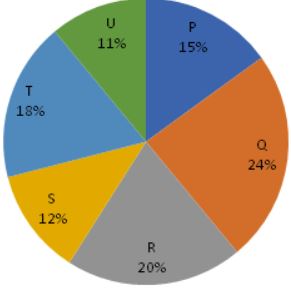 Introduction
Introduction
What is Quantitative Aptitude test?
Quantitative Aptitude is one of the prominent competitive aptitude subjects which evaluates numerical ability and problem solving skills of candidates. This test forms the major part of a number of important entrance and recruitment exams for different fields. The Quantitative Aptitude section primarily has questions related to the Simplification, Numbering Series, and Compound Interest, etc.
A candidate with quantitative aptitude knowledge will be in a better position to analyse and make sense of the given data. Quantitative Aptitude knowledge is an important measure for a prospective business executive's abilities.
The article IBPS SO Quantitative Aptitude Quiz 1 provides Quantitative Aptitude questions with answers useful to the candidates preparing for Competitive exams, Entrance exams, Interviews etc. The article IBPS SO Quantitative Aptitude Quiz 1 will assist the students to know the expected questions from Quantitative Aptitude.
 Quiz
Quiz
Directions(1 – 5): Study the following information carefully and answer the given questions:
Following pie chart shows the total number of students in 6 different colleges.
Total Number of Students = 5000
1. Find the average number of students in college P, Q and S together?- A. 700
B. 650
C. 850
D. 900
E. None of these
- A. 1000
B. 1050
C. 1150
D. 1200
E. None of these
- A. 1230
B. 1570
C. 1340
D. 1450
E. None of these
- A. 150
B. 200
C. 180
D. 100
E. 230
- A. 100%
B. 120%
C. 110%
D. 150%
E. 140%
Directions(1 – 3): What value should come in the place of question mark (?) in the following questions?
1. [latex]\sqrt{6084}[/latex] ÷ 3 + 45 = ? – 12376 ÷ 7
- A. 1839
B. 1945
C. 1757
D. 1653
E. None of these
- A. 45
B. 30
C. 75
D. 55
E. None of these
- A. 7
B. 4
C. 9
D. 5
E. None of these
- A. 50
B. 40
C. 30
D. 20
E. None of these
- A. [latex]\frac{51}{3375}[/latex]
B. [latex]\frac{67}{3375}[/latex]
C. [latex]\frac{2197}{3375}[/latex]
D. [latex]\frac{329}{3375}[/latex]
E. None of these
1. Pipes A, B and C are fitted to a tank. Each pipe can act as either an inlet or outlet pipe. Pipes A, B and C take 4, 6 and 8 hours to fill the empty tank or empty the full tank. In the first hour, pipes A and C act as inlet and B act as outlet. In the second hour, pipes A and B act as inlet and pipe C act as outlet. In the third hour, pipes B and C act as inlet and pipe A act as outlet and the process goes on. When will the tank be filled?
- A. In the 5th hour
B. In the 10th hour
C. In the 12th hour
D. In the 15th hour
E. None of these
- A. 10%
B. 15.2%
C. 8.8%
D. 20%
E. None of these
- A. 414
B. 404
C. 445
D. 420
E. 444
- A. 2200
B. 1800
C. 3158
D. 2800
E. 2000
- A. 147
B. 156
C. 186
D. 166
E. 200






